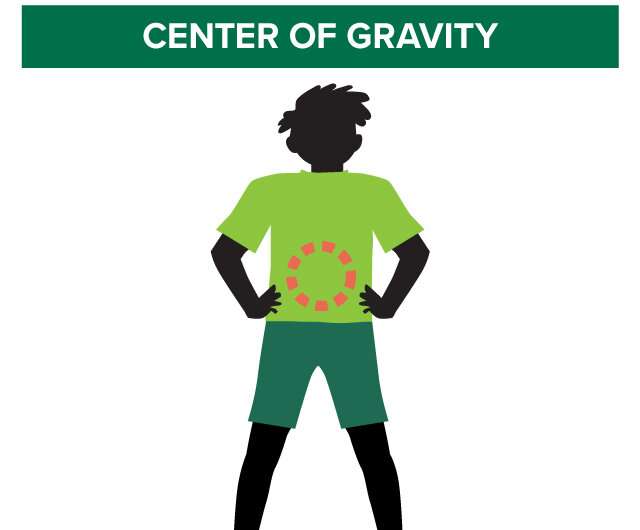Childhood injuries could decrease with balance training in schools

Balance is part of a child's successful progression in fundamental development. Higher levels of balance can help reduce injuries in children, as well as increase their ability to participate in a variety of sports and activities.
Claire Mowling, Ed.D., an assistant professor of kinesiology at the University of Alabama at Birmingham, discussed the impact of balance training on development in children in a recent peer-reviewed article in the Alabama State Association for Health, Physical Education, Recreation and Dance journal.
"Developing a child's motor skills early in life may help them pursue lifelong physical activity," said Mowling, who teaches and researches in the UAB School of Education. "By incorporating balance skills into physical education curriculum, educators can jump-start healthy habits in physical fitness."
Balance is broken down into two categories: static and dynamic balance. Static balance is the ability to maintain equilibrium in a stationary position, such as the tree pose. Achieving balance while moving through an obstacle course is known as dynamic balance.
"Balance impacts many areas of motor skill development," Mowling said. "Understanding center of gravity, line of gravity and base of support helps children make adjustments in the moment to maintain balance, thereby enhancing performance of motor skills."
Children should understand center of gravity, line of gravity and base of support early on, according to Mowling. To achieve children's understanding of these concepts, physical educators are encouraged to take balance into consideration as they are designing activities for their curriculums.
The base of support is the part of the body that comes in contact with the surface you are standing on. Based on the position of the body, the base supports the center of gravity and line gravity. If the base is wider, a sense of greater balance is achieved, and vice versa.
"Young children, especially kindergartners and first-graders, can practice balance by learning various bases of support through statue poses," Mowling said. "Then can progress through these movements by learning to achieve balance as their base is wider, more narrow, curled or twisted into different poses."
Finding the center
The article points out that center of gravity exists within all objects and as balance shifts. When the body is in a symmetrical position such as standing straight up in superhero pose, or legs are shoulder-width apart and hands are on the hips, the center of gravity is located in the exact center.
"As children achieve balance in a statue-type pose, the focus can be moved to balance and the center of gravity," Mowling said. "By changing their posture, the center of gravity shifts and the child becomes challenged in maintain stability."
According to Mowling, partner balances are a fun way for children to practice changes in posture while grasping the concepts of counterbalance and countertension. Children work as a team to find the right weight distribution and tension to maintain balance.
In everyday life, the body is constantly moving in asymmetrical positions due to movement such as twisting and turning, shifting the center of gravity, and creating a line of gravity. The line of gravity is an imaginary vertical line through the center of gravity to the base of support.
"Teachers can use visuals to help to teach the basics of each of these balance principles," Mowling said. "We can enhance a child's overall performance in motor abilities by incorporating and designing learning experiences with balance principles in mind."
As children move into the upper elementary grades, educators can look at ways to balance on new bases, like a balance beam, or moving through various obstacle courses to teach balance while moving. Extensions on bases and learning to dismount using a balanced landing position should be achieved at this age level.
"Creating a curriculum that intentionally teaches balance may result in a number of successes," Mowling said. "Good balance and stability should decrease the number of falls resulting in injury of children. Balance assists in the development of motor skills, participation in sports and ultimately a lifetime of physical activity."

















